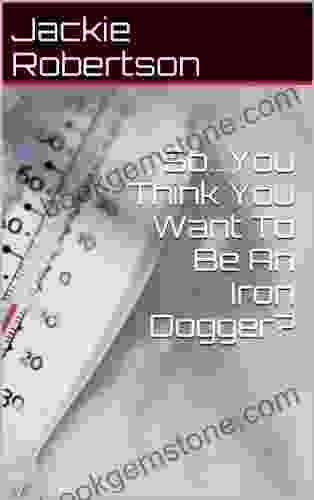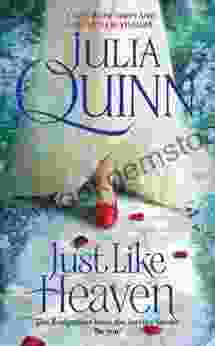The Pen Dictionarypen: A Comprehensive Guide to Proper Usage, Strokes, and Writing Styles

The pen, a humble writing instrument, has played a pivotal role in the dissemination of knowledge, the expression of creativity, and the recording of human history. From the ancient quill to the modern fountain pen, the pen has undergone a remarkable evolution, giving rise to a vast array of styles, nibs, and writing techniques.
In this comprehensive guide, we will delve into the fascinating world of the pen, exploring its rich history, diverse types, and proper usage. Whether you are an aspiring calligrapher, a seasoned writer, or simply curious about the art of penmanship, this article will provide valuable insights and practical tips to enhance your writing experience.
5 out of 5
| Language | : | English |
| File size | : | 1404 KB |
| Text-to-Speech | : | Enabled |
| Screen Reader | : | Supported |
| Enhanced typesetting | : | Enabled |
| Print length | : | 164 pages |
A Historical Perspective: The Evolution of the Pen
The history of the pen can be traced back to ancient civilizations, where scribes used sharpened reeds or animal bones to inscribe cuneiform or hieroglyphic characters on clay tablets or parchment.
In the Middle Ages, the quill pen emerged as the primary writing tool. Made from the flight feathers of geese or swans, quill pens were durable and versatile, allowing for both precise writing and expressive calligraphy.
The 19th century witnessed the invention of the fountain pen, which revolutionized writing by eliminating the need for frequent ink dipping. Fountain pens feature a reservoir that holds ink and a nib that controls the flow of ink to the paper.
In the 20th century, the ballpoint pen became the ubiquitous writing instrument we know today. With its simple design and inexpensive production, the ballpoint pen made writing accessible to the masses.
Types of Pens: A Diverse Range for Every Need
The modern pen market offers a wide array of types, each with its unique characteristics and applications.
- Fountain Pen: Known for its smooth writing experience and elegant aesthetics, fountain pens use a nib and a reservoir to deliver a controlled flow of ink. They are often preferred by calligraphers and writers who value precision and personalization.
- Ballpoint Pen: The most common type of pen, ballpoint pens utilize a small, rotating ball at the tip to distribute ink onto the paper. They are reliable, affordable, and suitable for everyday writing.
- Rollerball Pen: Similar to fountain pens, rollerball pens use a liquid ink that flows smoothly onto the paper. They offer a writing experience that is comparable to fountain pens but without the need for a reservoir.
- Gel Pen: Gel pens use a thick, gel-based ink that produces vibrant and opaque lines. They are often used for drawing, journaling, and creative writing.
- Marker Pen: Marker pens contain a permanent, non-toxic ink that is ideal for highlighting, drawing, and writing on various surfaces.
- Dip Pen: Dip pens require the user to dip the nib into an inkwell before writing. They are often used for calligraphy, illustration, and artistic purposes.
The Anatomy of a Pen: Understanding Its Components
Regardless of the type, all pens share certain fundamental components:
- Nib: The nib is the point of contact between the pen and the paper. It determines the thickness and shape of the written line and is available in various materials and sizes.
- Barrel: The barrel is the main body of the pen that houses the ink reservoir (in the case of fountain pens) and provides a grip for the user.
- Cap: The cap protects the nib and the ink from drying out when the pen is not in use.
- Converter: A converter is a removable ink reservoir that can be fitted into fountain pens to allow for the use of bottled ink.
- Cartridge: A cartridge is a disposable ink reservoir that is inserted into fountain pens.
The Art of Penmanship: Guidelines for Proper Usage
To write with grace and clarity, it is essential to master the proper techniques of penmanship. Here are some fundamental guidelines:
- Maintain a Comfortable Grip: Hold the pen lightly between your thumb and index finger, with the barrel resting on your middle finger. Avoid gripping the pen too tightly, as this can hinder your writing flow.
- Position the Pen Correctly: The pen should be held at a slight angle to the paper, with the nib facing down. This angle allows for optimal ink flow and prevents scratching.
- Apply Consistent Pressure: Exert a gentle and consistent pressure on the pen to produce smooth, even lines. Avoid pressing too hard, as this can damage the paper or the nib.
- Guide the Pen with Your Arm: Move your entire arm, not just your fingers, to guide the pen across the paper. This will result in more fluid and controlled writing.
- Maintain a Regular Rhythm: Develop a consistent writing pace that is neither too fast nor too slow. This will help you produce legible and aesthetically pleasing text.
Writing Styles: Exploring the Nuances of Penmanship
The pen, in the hands of a skilled writer, can produce a wide range of writing styles, each with its unique characteristics and applications.
- Cursive Writing: Cursive writing is a continuous, flowing style where letters are connected by loops and curves. It is often used for everyday writing and note-taking.
- Printing: Printing involves writing letters individually, with no connections between them. It is often used for formal documents, headings, and emphasis.
- Calligraphy: Calligraphy is the art of beautiful writing, often using specialized pens and inks. It is used for creating decorative manuscripts, invitations, and artistic works.
- Brush Lettering: Brush lettering uses a brush pen to create bold, expressive strokes. It is often used for signage, posters, and creative lettering.
Pen Care and Maintenance: Preserving Your Writing Instrument
Proper pen care is essential to ensure its longevity and performance. Here are some tips to keep your pen in good condition:
- Clean Your Pen Regularly: Use a soft cloth or a pen cleaner to remove any ink residue or dust from the nib and the barrel.
- Store Your Pen Properly: Keep your pen in a protective case or pouch when not in use. This will prevent damage to the nib and the barrel.
- Lubricate the Nib (Fountain Pens Only): Periodically lubricate the nib of your fountain pen with a small amount of silicone grease to prevent corrosion and ensure smooth writing.
- Replace the Ink Regularly: Replace the ink cartridge or refill the ink reservoir when the ink level is low. This will prevent the pen from running dry and damaging the nib.
: The Pen as a Timeless Tool for Expression and Communication
From its humble beginnings as a sharpened reed to its modern incarnations, the pen has evolved into an indispensable tool for writing, drawing, and artistic expression. Its versatility, durability, and ability to convey emotion and individuality make it a timeless instrument that continues to inspire writers, artists, and communicators of all types.
By understanding the proper usage, diverse types, and rich history of the pen, we can fully appreciate its significance and harness its power to create meaningful connections, express our thoughts, and record the annals of human experience.
5 out of 5
| Language | : | English |
| File size | : | 1404 KB |
| Text-to-Speech | : | Enabled |
| Screen Reader | : | Supported |
| Enhanced typesetting | : | Enabled |
| Print length | : | 164 pages |
Do you want to contribute by writing guest posts on this blog?
Please contact us and send us a resume of previous articles that you have written.
 Best Book
Best Book Page Flip
Page Flip Bookshelf
Bookshelf Literary loom
Literary loom Chapter
Chapter Bookish
Bookish PageTurner
PageTurner Bibliophile
Bibliophile Story
Story Inkwell
Inkwell Bookworm
Bookworm Labyrinth
Labyrinth Plot Twist
Plot Twist Prose
Prose Paperback
Paperback Storyteller
Storyteller Sanctuary
Sanctuary Fiction
Fiction Reading
Reading Chronicle
Chronicle Read
Read Hugh Sinclair
Hugh Sinclair Gregg Hurwitz
Gregg Hurwitz J R Haseloff
J R Haseloff Wayne J Lutz
Wayne J Lutz Xavier Marie Bonnot
Xavier Marie Bonnot Benjamin P Bowser
Benjamin P Bowser William Shakespeare
William Shakespeare Businessnews Publishing
Businessnews Publishing Terry Frei
Terry Frei Ian C Friedman
Ian C Friedman David J Rothman
David J Rothman Nick Smith
Nick Smith Seyyed Hossein Nasr
Seyyed Hossein Nasr Mitt Romney
Mitt Romney Jen Beck Seymour
Jen Beck Seymour Len Airey
Len Airey Neha Gupta
Neha Gupta Gavin Francis
Gavin Francis Luca Vargiu
Luca Vargiu Jon A Archambault
Jon A Archambault G Neri
G Neri Dr Lew Deitch
Dr Lew Deitch Elena Leman
Elena Leman Ana Sortun
Ana Sortun Triumphant Test Prep
Triumphant Test Prep Kristin Hannah
Kristin Hannah Fridtjof Nansen
Fridtjof Nansen Smart Reads
Smart Reads Russell Maddicks
Russell Maddicks Martin Woodward
Martin Woodward Mark Dawson
Mark Dawson Kaplan Test Prep
Kaplan Test Prep Narasimha Karumanchi
Narasimha Karumanchi Mark Greaney
Mark Greaney Joseph Toone
Joseph Toone Emily Kimelman
Emily Kimelman Andrew Hudgins
Andrew Hudgins Bob Mckenzie
Bob Mckenzie Lesley Jane Eales Reynolds
Lesley Jane Eales Reynolds Kevin Shea
Kevin Shea Emt Basic Exam Prep Team
Emt Basic Exam Prep Team Justin Goldman
Justin Goldman John Howells
John Howells Richard Bak
Richard Bak W E B Griffin
W E B Griffin Dk
Dk Pauline Harmange
Pauline Harmange C F Crist
C F Crist Sarah Vowell
Sarah Vowell R Raman
R Raman Caitlin Doughty
Caitlin Doughty Lisa Kleypas
Lisa Kleypas Proprietary Edition Kindle Edition
Proprietary Edition Kindle Edition Stuart Woods
Stuart Woods Kathleen Kirkland
Kathleen Kirkland Greg Breining
Greg Breining Garry Burnett
Garry Burnett L T Ryan
L T Ryan Michael Vlessides
Michael Vlessides Katherine Nouri Hughes
Katherine Nouri Hughes Yaa Gyasi
Yaa Gyasi Elizabeth Hay
Elizabeth Hay Jeff Hay
Jeff Hay Illustrated Edition Kindle Edition
Illustrated Edition Kindle Edition Kim Heinbuch
Kim Heinbuch Joseph Robertia
Joseph Robertia Simon Hart
Simon Hart Ray Walker
Ray Walker Brandon Royal
Brandon Royal Patricia Briggs
Patricia Briggs Jocelyn Jane Cox
Jocelyn Jane Cox Stan Skrabut
Stan Skrabut Russell Streeter
Russell Streeter Dr Ray Makar
Dr Ray Makar Sport Hour
Sport Hour Kindle Edition
Kindle Edition Jason Hogan
Jason Hogan Konstantinos Mylonas
Konstantinos Mylonas Manfred Theisen
Manfred Theisen Cindi Myers
Cindi Myers Leslie Davenport
Leslie Davenport Leo Books
Leo Books Christophe P Yerling Ph D
Christophe P Yerling Ph D A R Vasishtha
A R Vasishtha Hicham And Mohamed Ibnalkadi
Hicham And Mohamed Ibnalkadi Sterling Test Prep
Sterling Test Prep Lorelou Desjardins
Lorelou Desjardins Nisha Garg
Nisha Garg Print Replica Kindle Edition
Print Replica Kindle Edition Michel Roy
Michel Roy Laura Albritton
Laura Albritton Lonely Planet Kids
Lonely Planet Kids Jean Vives
Jean Vives Michele Shriver
Michele Shriver Rico Austin
Rico Austin Prasad Raju V V N R Pathapati
Prasad Raju V V N R Pathapati Francis J Buckley
Francis J Buckley Kira Salak
Kira Salak William Pitts
William Pitts Ian Tuhovsky
Ian Tuhovsky Monica Sorrenson
Monica Sorrenson Carla Mooney
Carla Mooney Shay Spivey
Shay Spivey Lally Brown
Lally Brown Philip Jackson
Philip Jackson Andrew Hempstead
Andrew Hempstead Elaine Sciolino
Elaine Sciolino Sophie Fuggle
Sophie Fuggle Susan Weese
Susan Weese Trivium Test Prep
Trivium Test Prep Edwyn Forest
Edwyn Forest Sigrid Fry Revere
Sigrid Fry Revere Jeremy K Davis
Jeremy K Davis Scott Butler
Scott Butler Mauricio Fau
Mauricio Fau Seth Abramson
Seth Abramson David Gordon
David Gordon Harley Wylde
Harley Wylde Cyndi Kinney
Cyndi Kinney Robert Collins
Robert Collins Dr John Hockey
Dr John Hockey Mike Kraus
Mike Kraus Joseph Phillips
Joseph Phillips Lynda Field
Lynda Field Kayla Chalko
Kayla Chalko Meghan Mccarthy
Meghan Mccarthy Andy Russell
Andy Russell Preston George Pysh
Preston George Pysh Tania N Shah
Tania N Shah Brooks Fiesinger
Brooks Fiesinger Michelle Lee
Michelle Lee Rebecca E F Barone
Rebecca E F Barone Laura Peyton Roberts
Laura Peyton Roberts Jim Mancuso
Jim Mancuso Raquel Baccetto
Raquel Baccetto Tony Mendoza
Tony Mendoza Helene Martensson
Helene Martensson Rhonda Leeman Taylor
Rhonda Leeman Taylor Terry Pratchett
Terry Pratchett Alex Hibbert
Alex Hibbert Kristine Ellingson
Kristine Ellingson John Murray
John Murray Rebecca Hill
Rebecca Hill William Wadsworth
William Wadsworth Genius Reads
Genius Reads Supersummary
Supersummary Ken Chaddock
Ken Chaddock Helene St James
Helene St James Paul Ames
Paul Ames Smart Edition
Smart Edition Manik Sheoran
Manik Sheoran Jared Derksen
Jared Derksen Andy Kirkpatrick
Andy Kirkpatrick Gil Martin
Gil Martin Stephen Haddelsey
Stephen Haddelsey Vincent Chidindu Asogwa
Vincent Chidindu Asogwa Georgios Papadakis
Georgios Papadakis Approach Guides
Approach Guides Kate Williams
Kate Williams Doug Gaskill
Doug Gaskill Narendra Kumar V
Narendra Kumar V Jonny Zucker
Jonny Zucker Randy Wayne White
Randy Wayne White Douglas Preston
Douglas Preston Kanchan Suyash
Kanchan Suyash Joeanna Rebello Fernandes
Joeanna Rebello Fernandes Tim Hannigan
Tim Hannigan Robert N Rosen
Robert N Rosen Alina Adams
Alina Adams Wolfgang Daunicht
Wolfgang Daunicht Rod Kulbach
Rod Kulbach Margaret K Nydell
Margaret K Nydell Colson Whitehead
Colson Whitehead Shanta Kumar
Shanta Kumar Cliff Seruntine
Cliff Seruntine Luca Brambilla
Luca Brambilla Skip Hollandsworth
Skip Hollandsworth Dr Hooelz
Dr Hooelz Stephen Ausherman
Stephen Ausherman Paul Murton
Paul Murton Carlos A Caggiani
Carlos A Caggiani Mary Ann Hogan
Mary Ann Hogan Tony Horwitz
Tony Horwitz Karsten Heuer
Karsten Heuer Joe Pelletier
Joe Pelletier L Waxy Gregoire
L Waxy Gregoire Isee Exam Preparation Experts
Isee Exam Preparation Experts David Archer
David Archer Jason Dean
Jason Dean Wilfred M Mcclay
Wilfred M Mcclay Richard Kadrey
Richard Kadrey Wayne Johnston
Wayne Johnston Fiona Gibson
Fiona Gibson John Walters
John Walters Steve Warner
Steve Warner Khaled Hosseini
Khaled Hosseini Janet Chapple
Janet Chapple Rich Polanco
Rich Polanco Zip Reads
Zip Reads S K Gupta
S K Gupta Nikki Nichols
Nikki Nichols Rick Steves
Rick Steves Kaye Edwards
Kaye Edwards John Hiker
John Hiker Bruce Hunt
Bruce Hunt Edulink Gmbh
Edulink Gmbh Nachole Johnson
Nachole Johnson Jane Moore
Jane Moore John Rae
John Rae Garry J Shaw
Garry J Shaw One Edition Kindle Edition
One Edition Kindle Edition James Cave
James Cave 50minutes Com
50minutes Com Robert D Kaplan
Robert D Kaplan Miles Martin
Miles Martin Lingo Mastery
Lingo Mastery Nicholas Gallo
Nicholas Gallo Ged Wilmot
Ged Wilmot Bruce Boudreau
Bruce Boudreau Richard Henry Dana
Richard Henry Dana Edward Hoagland
Edward Hoagland Zigzag English
Zigzag English Ben Malisow
Ben Malisow John Germov
John Germov Bob Smale
Bob Smale Maria Spantidi
Maria Spantidi Michael Renshaw
Michael Renshaw Julian Stern
Julian Stern Insight Guides
Insight Guides Michele G Kunz
Michele G Kunz Edna Fernandes
Edna Fernandes Deanna Raybourn
Deanna Raybourn Horace C A
Horace C A Laura Lee Smith
Laura Lee Smith James Cowan
James Cowan Tim Brown
Tim Brown Simon Richmond
Simon Richmond Michael Powell
Michael Powell Rob Pate
Rob Pate Katrina Lawrence
Katrina Lawrence Anita Landoll
Anita Landoll Evie Litton
Evie Litton Wendy C Crone
Wendy C Crone Anuj Tikku
Anuj Tikku Balazs Csigi
Balazs Csigi Peterson S
Peterson S John Scherber
John Scherber Nicholas Bjorn
Nicholas Bjorn Alan Charlesworth
Alan Charlesworth Hannah Tyson
Hannah Tyson Aminta Arrington
Aminta Arrington Rosita Forbes
Rosita Forbes John W Lundin
John W Lundin Grady Hendrix
Grady Hendrix T A Williams
T A Williams Sara Wheeler
Sara Wheeler Sigurd F Olson
Sigurd F Olson Ron Siliko
Ron Siliko Tim Dowley
Tim Dowley Prepvantage
Prepvantage Joel J Lerner
Joel J Lerner Patrick O Sullivan
Patrick O Sullivan Mike Chambers
Mike Chambers Steven W Dulan
Steven W Dulan Rupika Raj
Rupika Raj Lonely Planet
Lonely Planet Rory Stewart
Rory Stewart Emily Colin
Emily Colin Mark Mclaughlin
Mark Mclaughlin Kerry Karram
Kerry Karram Wickaninnish Inn
Wickaninnish Inn Lucy Peet
Lucy Peet Lucy Coleman
Lucy Coleman Kenneth Oppel
Kenneth Oppel Nigel Cliff
Nigel Cliff Thomas E Johnson
Thomas E Johnson Matt Racine
Matt Racine Bookrags Com
Bookrags Com Janet Evans
Janet Evans Felicie Williams
Felicie Williams Um A Yube
Um A Yube Noor De Olinad
Noor De Olinad Greg Gilhooly
Greg Gilhooly Eric Newman
Eric Newman Magnus D Jango
Magnus D Jango Sandra Dallas
Sandra Dallas Erin Trahan
Erin Trahan Philip Donlay
Philip Donlay Chic Scott
Chic Scott John Keahey
John Keahey Michelle Larkin
Michelle Larkin Melody Carlson
Melody Carlson Marie Benedict
Marie Benedict Nicholas J Cotsonika
Nicholas J Cotsonika Tim Notier
Tim Notier Mark Rosenman
Mark Rosenman Bright Summaries
Bright Summaries Ilona Andrews
Ilona Andrews Lawrence Osborne
Lawrence Osborne Steve Schwartz
Steve Schwartz Kevin Marx
Kevin Marx Gina Wisker
Gina Wisker Helen Wenley
Helen Wenley Laura Ben David
Laura Ben David Trevanian
Trevanian Douglas J Gould
Douglas J Gould Fatime Losonci
Fatime Losonci Brian Mcfarlane
Brian Mcfarlane Julia Quinn
Julia Quinn William W Johnstone
William W Johnstone John Merriam
John Merriam Ben Tall
Ben Tall Gerald Hausman
Gerald Hausman Mark Lee
Mark Lee Louis L Amour
Louis L Amour Sylvain Tesson
Sylvain Tesson Mariah Laine Moyle
Mariah Laine Moyle Tracy Johnston
Tracy Johnston C E Flores
C E Flores Tessa Dare
Tessa Dare Ingrid P Wicken
Ingrid P Wicken Fodor S Travel Guides
Fodor S Travel Guides Eric Engle
Eric Engle Edward R Lachapelle
Edward R Lachapelle Nadav Snir
Nadav Snir Dan Fullerton
Dan Fullerton Jackson Carter
Jackson Carter Robert B Parker
Robert B Parker Joshua Armstrong
Joshua Armstrong Jeanie Buss
Jeanie Buss Khalid Khashoggi
Khalid Khashoggi Jay Kirk
Jay Kirk Alexis Lipsitz Flippin
Alexis Lipsitz Flippin Robert Finch
Robert Finch Pat Thomson
Pat Thomson Manny Serrato
Manny Serrato Eugene C Toy
Eugene C Toy Lucille Recht Penner
Lucille Recht Penner Bob Duff
Bob Duff Jenny Mackay
Jenny Mackay W M Raebeck
W M Raebeck Wizer
Wizer Julia Alvarez
Julia Alvarez Lewis Morris
Lewis Morris April Vahle Hamel
April Vahle Hamel Hilde Hoogenboom
Hilde Hoogenboom Fred Ray Lybrand
Fred Ray Lybrand Peter Mansfield
Peter Mansfield Snap Summaries
Snap Summaries Vince Kotchian
Vince Kotchian Ted Kulfan
Ted Kulfan Brien Foerster
Brien Foerster Roy Fisher
Roy Fisher John Gilstrap
John Gilstrap Ted Chiang
Ted Chiang Disha Experts
Disha Experts Julia Ann Clayton
Julia Ann Clayton Paul Johnson
Paul Johnson Jearl Walker
Jearl Walker Eric Bodnar
Eric Bodnar Nick Angelis
Nick Angelis Rajani Katta
Rajani Katta Osasumwen Asoro
Osasumwen Asoro United States Government Us Army
United States Government Us Army Jeffrey Alford
Jeffrey Alford Tao Le
Tao Le Kevin Biggar
Kevin Biggar Frosty Wooldridge
Frosty Wooldridge Sharon A Wynne
Sharon A Wynne Stephen John
Stephen John Helen Dunn Frame
Helen Dunn Frame Grace Barrington Shaw
Grace Barrington Shaw Jay H Lefkowitch
Jay H Lefkowitch Mark Zegarelli
Mark Zegarelli Warwick Trucker
Warwick Trucker J Maarten Troost
J Maarten Troost Kristopher Martel
Kristopher Martel Lance Pototschnik
Lance Pototschnik Keri Bloomfield
Keri Bloomfield Jane Bottomley
Jane Bottomley Redhen Family
Redhen Family Ken Griffey Jr
Ken Griffey Jr Tim Bauerschmidt
Tim Bauerschmidt Educational Testing Service
Educational Testing Service Megan Poore
Megan Poore Hugo Banzer Suarez
Hugo Banzer Suarez Cosmic Kids Publications
Cosmic Kids Publications Meike Winnemuth
Meike Winnemuth Rex Nelson
Rex Nelson John Seibert Farnsworth
John Seibert Farnsworth Language Guru
Language Guru Maria Montessori
Maria Montessori Marie Cirano
Marie Cirano Ashley Schmitt
Ashley Schmitt Sean Dietrich
Sean Dietrich J D Ware
J D Ware Pip Williams
Pip Williams Juliet Grames
Juliet Grames Simon Turney
Simon Turney Nick Adams
Nick Adams Darren Alff
Darren Alff Christopher D Nolan
Christopher D Nolan Kathleen Norris
Kathleen Norris Robert Cargill
Robert Cargill Rachel Russ
Rachel Russ Moshe Ohayon
Moshe Ohayon Luisa Gastambide
Luisa Gastambide Ross Blankenship
Ross Blankenship Michael Corayer
Michael Corayer Fethi Mansouri
Fethi Mansouri Pamela K Lamb
Pamela K Lamb Various
Various General
General Anna Curran
Anna Curran Richard Palmer
Richard Palmer Jack Slater
Jack Slater Huma Filo
Huma Filo William Ma
William Ma Janice K Ledford
Janice K Ledford Jamie Jensen
Jamie Jensen Lloyd Richardson
Lloyd Richardson Saroo Brierley
Saroo Brierley Bob Shepton
Bob Shepton Rochelle Knight
Rochelle Knight Ross Bonander
Ross Bonander Quick Reads
Quick Reads Nicolas Rodak
Nicolas Rodak Baby Professor
Baby Professor John Henderson
John Henderson Dixie Dansercoer
Dixie Dansercoer John Morrison
John Morrison Zanna Sloniowska
Zanna Sloniowska Matthew Simon
Matthew Simon Robert Crais
Robert Crais Rusty Young
Rusty Young Angela Stevens
Angela Stevens Nicholas Crowder
Nicholas Crowder Morgan Stafford
Morgan Stafford Caryn Boddie
Caryn Boddie Steven Cowie
Steven Cowie Tony Daffern
Tony Daffern John Hemming
John Hemming Amy Wilentz
Amy Wilentz Maggie Ryan
Maggie Ryan Dr Jyuthica Laghate
Dr Jyuthica Laghate Paul Watson
Paul Watson Kazim Ali
Kazim Ali Lawrence Durrell
Lawrence Durrell Jesse M Ehrenfeld
Jesse M Ehrenfeld Topher Donahue
Topher Donahue Laura Lincoln Maitland
Laura Lincoln Maitland Savage Greenboro
Savage Greenboro Viki Winterton
Viki Winterton Christine Wilcox
Christine Wilcox Con Coughlin
Con Coughlin Tiara R Brown
Tiara R Brown Joshua Jelly Schapiro
Joshua Jelly Schapiro Ibl Press
Ibl Press Boye Lafayette De Mente
Boye Lafayette De Mente George Orwell
George Orwell Stanley Vast
Stanley Vast Nielson Phu
Nielson Phu Markes E Johnson
Markes E Johnson Neil Chelton
Neil Chelton Stephan Orth
Stephan Orth Kim Heldman
Kim Heldman J R Klein
J R Klein
Light bulbAdvertise smarter! Our strategic ad space ensures maximum exposure. Reserve your spot today!
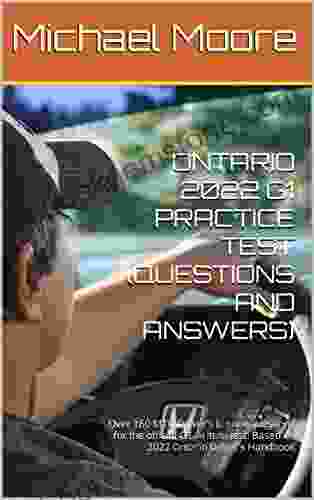
 Grayson BellPrepare for Ontario's G1 Test with Our Comprehensive Practice Questions and...
Grayson BellPrepare for Ontario's G1 Test with Our Comprehensive Practice Questions and... Ismael HayesFollow ·6k
Ismael HayesFollow ·6k Jayden CoxFollow ·12.5k
Jayden CoxFollow ·12.5k Forrest ReedFollow ·17.4k
Forrest ReedFollow ·17.4k Banana YoshimotoFollow ·16.7k
Banana YoshimotoFollow ·16.7k Dashawn HayesFollow ·11.9k
Dashawn HayesFollow ·11.9k Cortez ReedFollow ·12.6k
Cortez ReedFollow ·12.6k Braeden HayesFollow ·16.5k
Braeden HayesFollow ·16.5k Arthur MasonFollow ·3.6k
Arthur MasonFollow ·3.6k
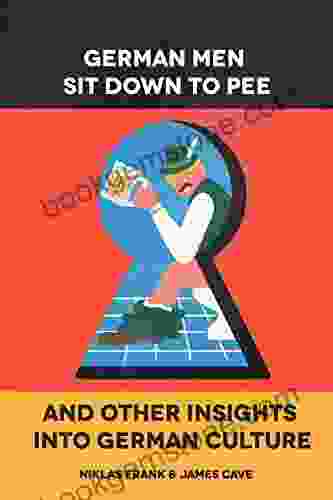
 Scott Parker
Scott ParkerGerman Men Sit Down To Pee And Other Insights Into German...
German culture is...
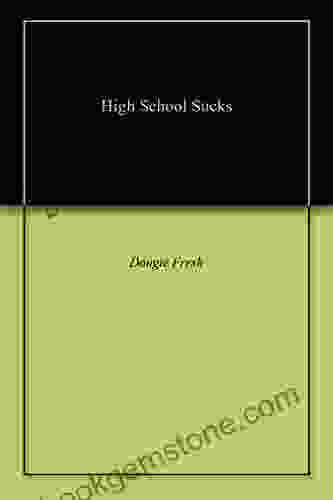
 Tyler Nelson
Tyler NelsonHigh School: A Comprehensive Guide to Surviving the...
High school can...
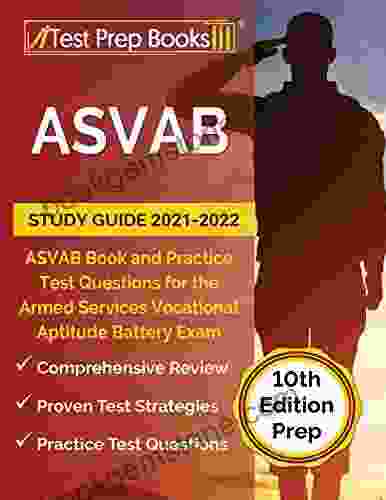
 Dan Bell
Dan BellUnlocking Success in Military Careers: A Comprehensive...
Embarking on a military career is a...
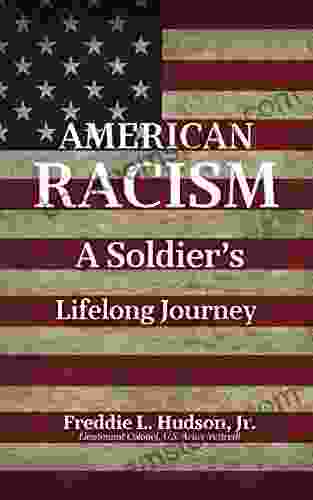
 Leslie Carter
Leslie CarterAn American Soldier's Lifelong Journey with Racism: From...
In the annals of...
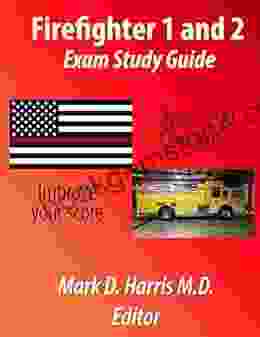
 Aldous Huxley
Aldous HuxleyFirefighters: Guardians of Our Communities and Exam Study...
Firefighters, the valiant sentinels of...
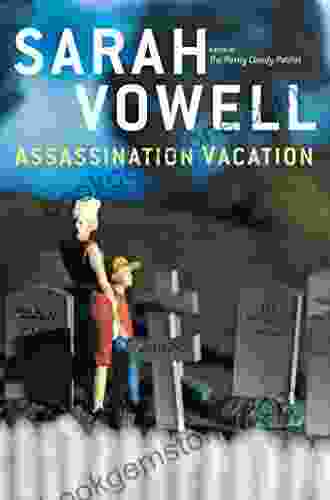
 Jason Reed
Jason ReedAn Unforgettable Literary Journey: Exploring...
: A Trip Down History's Darkest...
5 out of 5
| Language | : | English |
| File size | : | 1404 KB |
| Text-to-Speech | : | Enabled |
| Screen Reader | : | Supported |
| Enhanced typesetting | : | Enabled |
| Print length | : | 164 pages |



